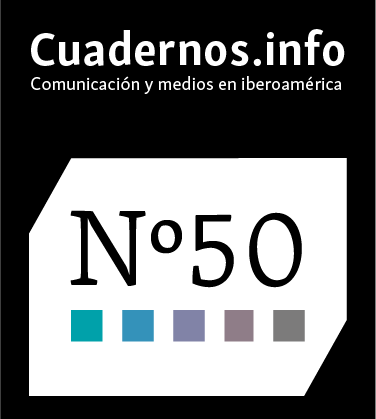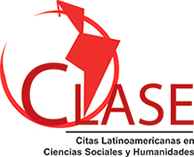Percepción de estudiantes sobre la comunicación institucional universitaria
DOI:
https://doi.org/10.7764/cdi.50.27617Palabras clave:
comunicación organizacional, universidad, educación superior, percepción estudiantil, marketingResumen
El objetivo de esta investigación es evaluar la comunicación institucional de 21 universidades ecuatorianas desde la percepción de los estudiantes. Se aplicó una encuesta en línea con consistencia interna (ω=0,91) a 3540 alumnos y se valoró su percepción como estudiantes potenciales y actuales; los datos se analizaron mediante la prueba U de Mann-Whitney y el coeficiente τ de Kendall. Se destaca que el factor que más influyó para elegir la institución es el costo, que las universidades privadas gestionan mejor la relación con el alumnado y que la satisfacción sobre la comunicación está correlacionada con el compromiso que sienten los estudiantes actuales. Es indispensable que las instituciones de educación superior cuenten con equipos propios de comunicación y que valoren los canales en línea y offline, así como la percepción de padres/madres, ya que tienen una alta influencia en la decisión de sus hijos.
Descargas
Citas
Aitken, N. (1982). College Student Performance, Satisfaction and Retention: Specification and Estimation of a Structural Model. Journal of Higher Education, 53(1), 32–50. https://doi.org/10.1080/00221546.1982.11780423
Alves, H. & Raposo, M. (2010). The Influence of University Image on Student Behaviour. International Journal of Educational Management, 24(1), 73–85. https://doi.org/10.1108/09513541011013060
Berganza, R., Lavín, E., & Piñeiro-Naval, V. (2017). La percepción de los periodistas españoles acerca de sus roles profesionales (Spanish journalists’ perception about their professional roles). Comunicar, 51, 83–92. https://doi.org/10.3916/C51-2017-08
Bonilla, M. del Rocío, Perea, E., del Olmo, J. L., & Corrons, A. (2020). Insights into user engagement on social media. Case study of a higher education institution. Journal of Marketing for Higher Education, 30(1), 145-160. https://doi.org/10.1080/08841241.2019.1693475
Carvalho, S. W. & de Oliveira Mota, M. (2010). The Role of Trust in Creating Value and Student Loyalty in Relational Exchanges between Higher Education Institutions and Their Students. Journal of Marketing for Higher Education, 20(1),145–65. https://doi.org/10.1080/08841241003788201
Casidy, R. (2014). The role of perceived market orientation in the higher education sector. Australasian Marketing Journal (AMJ), 22(2), 155-163. https://doi.org/10.1016/j.ausmj.2014.02.001
Casidy, R. & Wymer, W. (2018). A Taxonomy of Prestige-Seeking University Students: Strategic Insights for Higher Education. Journal of Strategic Marketing, 26(2), 140–55. https://doi.org/10.1080/0965254X.2016.1182573
Clark, M., Fine, M. B., & Scheuer, C. L. (2017). Relationship Quality in Higher Education Marketing: The Role of Social Media Engagement. Journal of Marketing for Higher Education, 27(1), 40–58. https://doi.org/10.1080/08841241.2016.1269036
Constantinides, E. & Zinck Stagno, M. C. (2011). Potential of the Social Media as Instruments of Higher Education Marketing: A Segmentation Study. Journal of Marketing for Higher Education, 21(1), 7–24. https://doi.org/10.1080/08841241.2011.573593
Deng, L. & Chan, W. (2017). Testing the Difference Between Reliability Coefficients Alpha and Omega. Educational and Psychological Measurement, 77(2), 185–203. https://doi.org/10.1177/0013164416658325
Dunn, T. J., Baguley, T., & Brunsden, V. (2014). From Alpha to Omega: A Practical Solution to the Pervasive Problem of Internal Consistency Estimation. British Journal of Psychology, 105(3), 399–412. https://doi.org/10.1111/bjop.12046
Elliott, K. M. & Healy, M. A. (2001). Key Factors Influencing Student Satisfaction Related to Recruitment and Retention. Journal of Marketing for Higher Education, 10(4), 1–11. https://doi.org/10.1300/J050v10n04_01
Erazo-Coronado, L., Llano-Aristizábal, S., Garcés-Prettel, M., & Erazo-Coronado, A. M. (2020). Impacto de la comunicacion de la responsabilidad social universitaria en la seleccion de universidad y efecto mediador de la reputacion (Impact of university social responsibility communication on university selection and the mediating effect of reputation). El Profesional de la Información, 29(4). https://doi.org/10.3145/epi.2020.jul.38
Fayos, T., Gonzalez-Gallarza, M., Servera, D., & Arteaga, F. (2011). Análisis y evaluación del servicio de formación universitaria: implicaciones para el marketing estratégico de las universidades (Analysis and assessment of the service of higher education: strategic marketing implications for universities). Revista de Investigación en Educación, 9(2), 133–52. Retrieved from http://reined.webs.uvigo.es/index.php/reined/article/view/119
Gallegos, J. A. & Vasquez, A. (2019). Explaining university student loyalty: theory, method, and empirical research in Chile. Academia Revista Latinoamericana de Administración, 32(4), 525-540. https://doi.org/10.1108/ARLA-02-2019-0049
García-García, M. (2018). Universidad y medios sociales. Gestión de la comunicación en la universidad española (University and Social Media Management. Communication at the Spanish University). Prisma Social, (22), 20–36. Retrieved from https://revistaprismasocial.es/article/view/2535
Gibbs, P. & Dean, A. (2015). Do Higher Education Institutes Communicate Trust Well? Journal of Marketing for Higher Education, 25(2), 155–70. https://doi.org/10.1080/08841241.2015.1059918
GlobalWebIndex. (2019). The Youth of the Nation: Global Trends Among Gen Z. Retrieved from https://assets.ctfassets.net/inb32lme5009/7wDIuSsLOnSxTUqPmRb081/603b8ffb77757549d39034884a23743c/The_Youth_of_the_Nations__Global_Trends_Among_Gen_Z.pdf
Goodrich, K., Swani, K., & Munch, J. (2018). How to connect with your best student prospects: saying the right things, to the right students, in the right media. Journal of Marketing Communications, 26(4), 434-453. https://doi.org/10.1080/13527266.2018.1514319
Hayes, T. J., Ruschman, D., & Walker, M. M. (2009). Social Networking as an Admission Tool: A Case Study in Success. Journal of Marketing for Higher Education, 19(2), 109–124. https://doi.org/10.1080/08841240903423042
Helgesen, Ø. (2008). Marketing for Higher Education: A Relationship Marketing Approach. Journal of Marketing for Higher Education 18(1), 50–78. https://doi.org/10.1080/08841240802100188
Hemsley-Brown, J. & Oplatka, I. (2015). University choice: what do we know, what don’t we know and what do we still need to find out? International Journal of Educational Management, 29(3), 254–74. https://doi.org/10.1108/IJEM-10-2013-0150
Instituto de Estadística de la UNESCO. (2014). Campos de educación y capacitación 2013 de la CINE (ISCED-F 2013): Manual que acompaña la Clasificación Internacional Normalizada de la Educación 2011 (ISCED Fields of Education and Training 2013 (ISCED-F 2013): Manual accompanying the International Standard Classification of Education 2011). Montreal, Canada: Instituto de Estadística de la UNESCO. https://doi.org/10.15220/978-92-9189-157-3-sp
Khanna, M., Jacob, I., & Yadav, N. (2014). Identifying and Analyzing Touchpoints for Building a Higher Education Brand. Journal of Marketing for Higher Education, 24(1), 122–43. https://doi.org/10.1080/08841241.2014.920460
Kurniawan, Y., Setiawan, S., Bhutkar, G., & Cabezas, D. (2020). Instagram Engagement for University. In 2020 International Conference on Information Management and Technology (ICIMTech) (pp. 887-892). IEEE. https://doi.org/10.1109/ICIMTech50083.2020.9211134
Maringe, F. (2006). University and course choice: Implications for positioning, recruitment and marketing. International Journal of Educational Management, 20(6), 466–79. https:// doi.org/10.1108/09513540610683711
Menon, M. E., Saiti, A., & Socratous, M. (2007). Rationality, Information Search and Choice in Higher Education: Evidence from Greece. Higher Education, 54(5), 705–21. https://doi.org/10.1007/s10734-006-9019-3
Moogan, Y. J. (2011). Can a higher education institution’s marketing strategy improve the student‐institution match? International Journal of Educational Management, 25(6), 570–89. https://doi.org/10.1108/09513541111159068
Ortega, J. L. & Aguillo, I. F. (2009). Mapping World-Class Universities on the Web. Information Processing & Management, 45(2), 272–79. hthttps://doi.org/10.1016/j.ipm.2008.10.001
Özdemir, A., Tozlu, E., Şen, E., & Ateşoğlu, H. (2016). Analyses of Word-of-Mouth Communication and Itseffect on Students’ University Preferences. Procedia-Social and Behavioral Sciences, 235, 22–35. https://doi.org/10.1016/j.sbspro.2016.11.022
Peruta, A. & Shields, A. B. (2016). Social Media in Higher Education: Understanding How Colleges and Universities Use Facebook. Journal of Marketing for Higher Education, 27(1), 131–43. https://doi.org/10.1080/08841241.2016.1212451
Rehman, M. A., Woyo, E., Akahome, J. E., & Sohail, M. D. (2020). The influence of course experience, satisfaction, and loyalty on students’ word-of-mouth and re-enrolment intentions. Journal of Marketing for Higher Education. https://doi.org/10.1080/08841241.2020.1852469
Rodríguez, A. & Santamaría, P. (2012). Análisis del uso de las redes sociales en Internet: Facebook y Twitter en las Universidades españolas (Analysis of the use of social networks on the Internet: Facebook and Twitter in Spanish Universities). ICONO14, Revista científica de comunicación y tecnologías emergentes, 10(2), 228–246. https://doi.org/10.7195/ri14.v10i2.198
Rojas-Méndez, J. I., Vásquez-Párraga, A. Z., Kara, A., & Cerda-Urrutia, A. (2009). Determinants of Student Loyalty in Higher Education: A Tested Relationship Approach in Latin America. Latin American Business Review, 10(1), 21–39. https://doi.org/10.1080/10978520903022089
Sampaio, C. H., Perin, M. G., Simões, C., & Kleinowski, H. (2012). Students’ Trust, Value and Loyalty: Evidence from Higher Education in Brazil. Journal of Marketing for Higher Education, 22(1), 83–100. https://doi.org/10.1080/08841241.2012.705796
Saraite-Sariene, L., Gálvez Rodríguez, M. D. M., & Haro de Rosario, A. (2018). Exploring Determining Factors of Web Transparency in the World’s Top Universities. Revista de Contabilidad, 21(1), 63–72. https://doi.org/10.1016/j.rcsar.2017.07.004
Segura-Mariño, A. G., Paniagua-Rojano, F. J., & Fernández-Sande, M. (2020). Metodología para evaluar la comunicación universitaria en Facebook y Twitter (Methodology to evaluate university communication on Facebook and Twitter). Prisma Social, (28), 127–144. Retrieved from https://revistaprismasocial.es/article/view/3357
Shields, A. B. & Peruta, A. (2018). Social Media and the University Decision. Do Prospective Students Really Care? Journal of Marketing for Higher Education, 29(1), 67–83. https://doi.org/10.1080/08841241.2018.1557778
Simões, C. & Soares, A. M. (2010). Applying to Higher Education: Information Sources and Choice Factors. Studies in Higher Education, 35(4). 371–389. https://doi.org/10.1080/03075070903096490
Slack, K., Mangan, J., Hughes, A., & Davies, P. (2014). ‘Hot’, ‘Cold’ and ‘Warm’ Information and Higher Education Decision-Making. British Journal of Sociology of Education, 35(2), 204–223. https://doi.org/10.1080/01425692.2012.741803
Sumartias, S. & Nuraryo, I. (2017). Student satisfaction, University brand image and its impact on word of mouth communication. International Journal of Applied Business and Economic Research, 15(19), 475-483.
Sutherland, K., Davis, C., Terton, U., & Visser, I. (2018). University Student Social Media Use and Its Influence on Offline Engagement in Higher Educational Communities. Student Success, 9(2), 13–24. https://doi.org/10.5204/ssj.v9i2.400
Vallaeys, F. (2008). Responsabilidad social universitaria: una nueva filosofía de gestión ética e inteligente para las universidades (University Social Responsibility: A New Philosophy of Ethical and Intelligent Management for Universities). Educación superior y sociedad, 13(2), 191–220. Retrieved from https://unesdoc.unesco.org/ark:/48223/pf0000182170
Veas, C. (2015). La Política y Gestión Comunicacional como aporte al desarrollo de la gestión institucional de las Universidades Chilenas (Communication Policy and Management as a contribution to Chilean universities institutional management). Revista Internacional de Relaciones Públicas, 5(9), 179–206. https://doi.org/10.5783/RIRP-9-2015-10-179-206
Vera Silva, C. & Gouveia Rodrigues, R. (2012). Web Site Quality Evaluation in Higher Education Institutions. Procedia Technology, 5, 273–282. https://doi.org/10.1016/j.protcy.2012.09.030
Viladrich, C., Angulo-Brunet, A. & Doval, D. (2017). Un viaje alrededor de alfa y omega para estimar la fiabilidad de consistencia interna (A journey around alpha and omega to estimate internal consistency reliability). Anales de Psicología, 33(3), 755–782. https://doi.org/10.6018/analesps.33.3.268401
Descargas
Publicado
Cómo citar
Número
Sección
Licencia
Derechos de autor 2021 Adriana Graciela Segura-Mariño, Manuel Fernández-Sande, Francisco Javier Paniagua-Rojano

Esta obra está bajo una licencia internacional Creative Commons Atribución-CompartirIgual 4.0.















